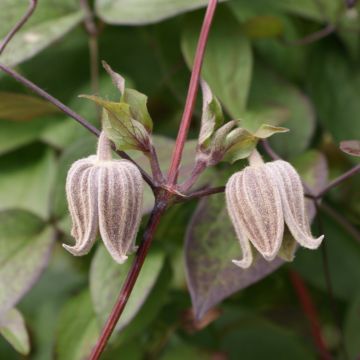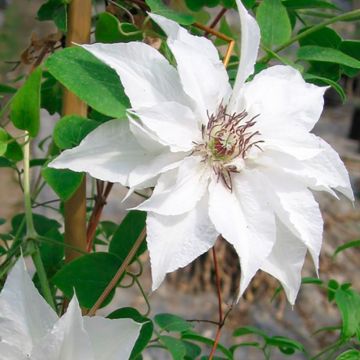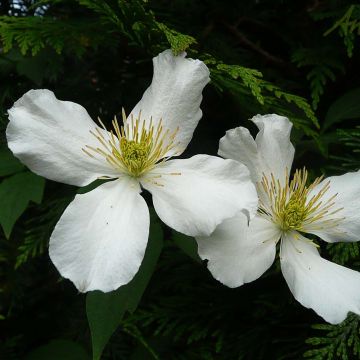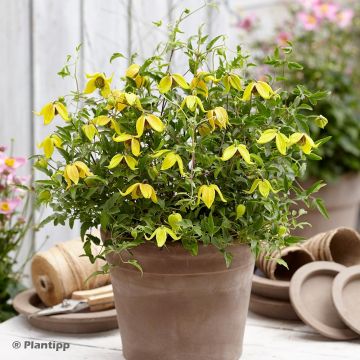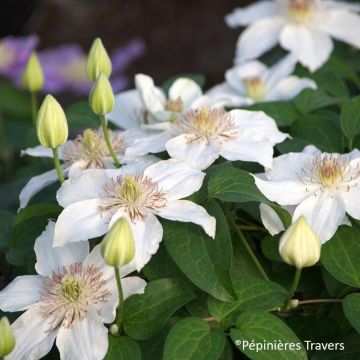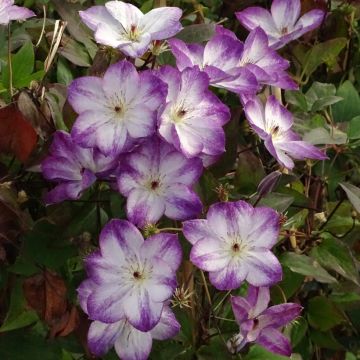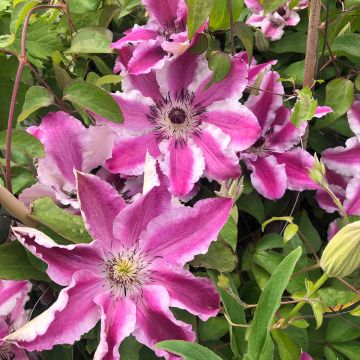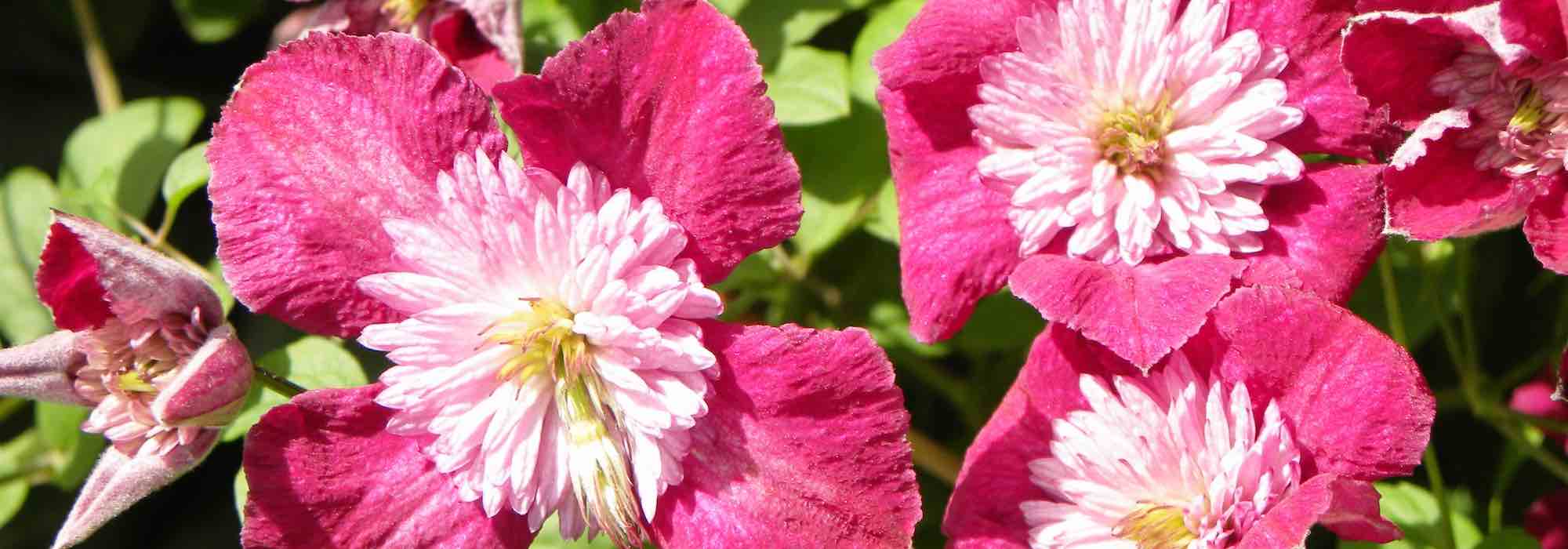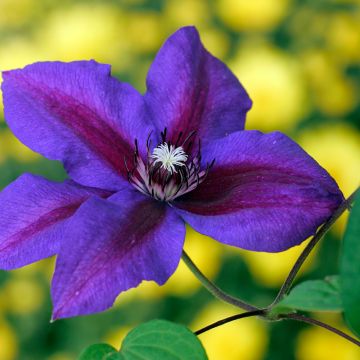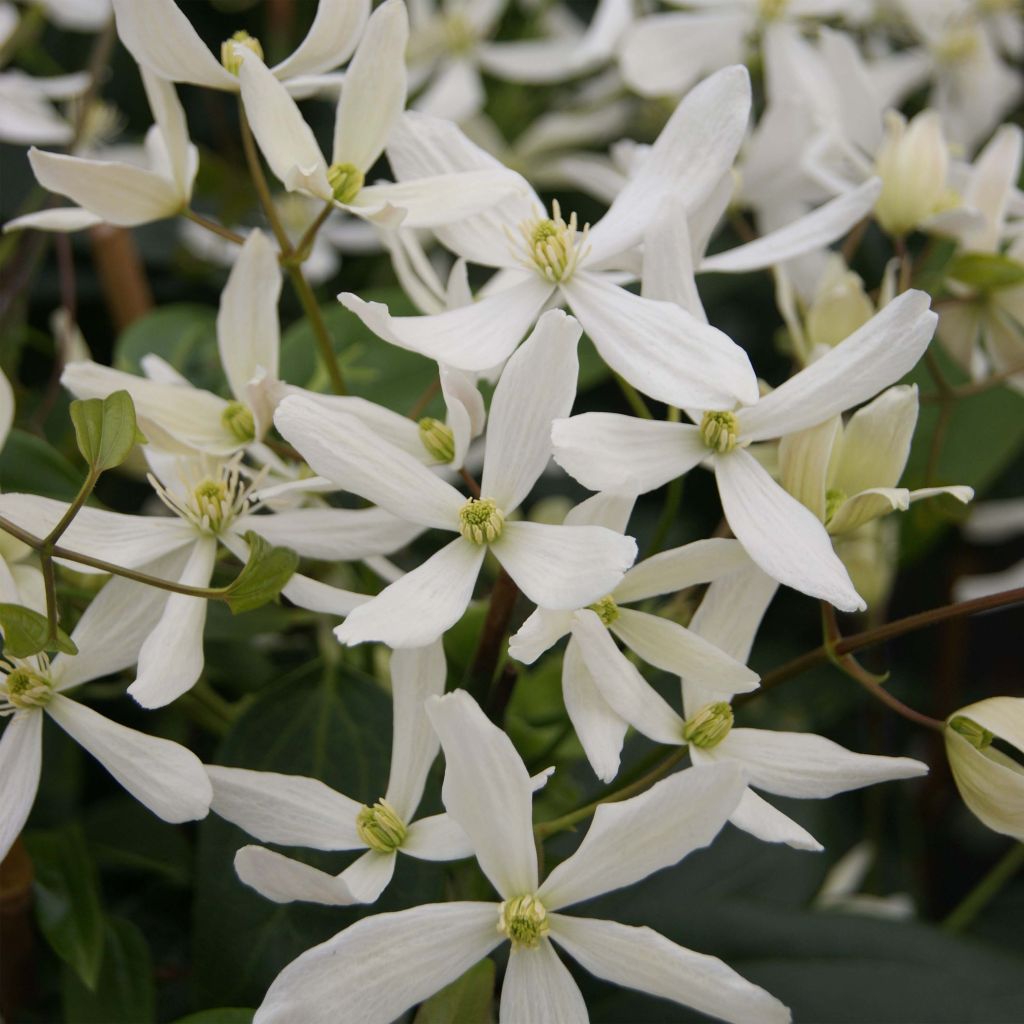

Clematis armandii Snowdrift - Evergreen Clematis
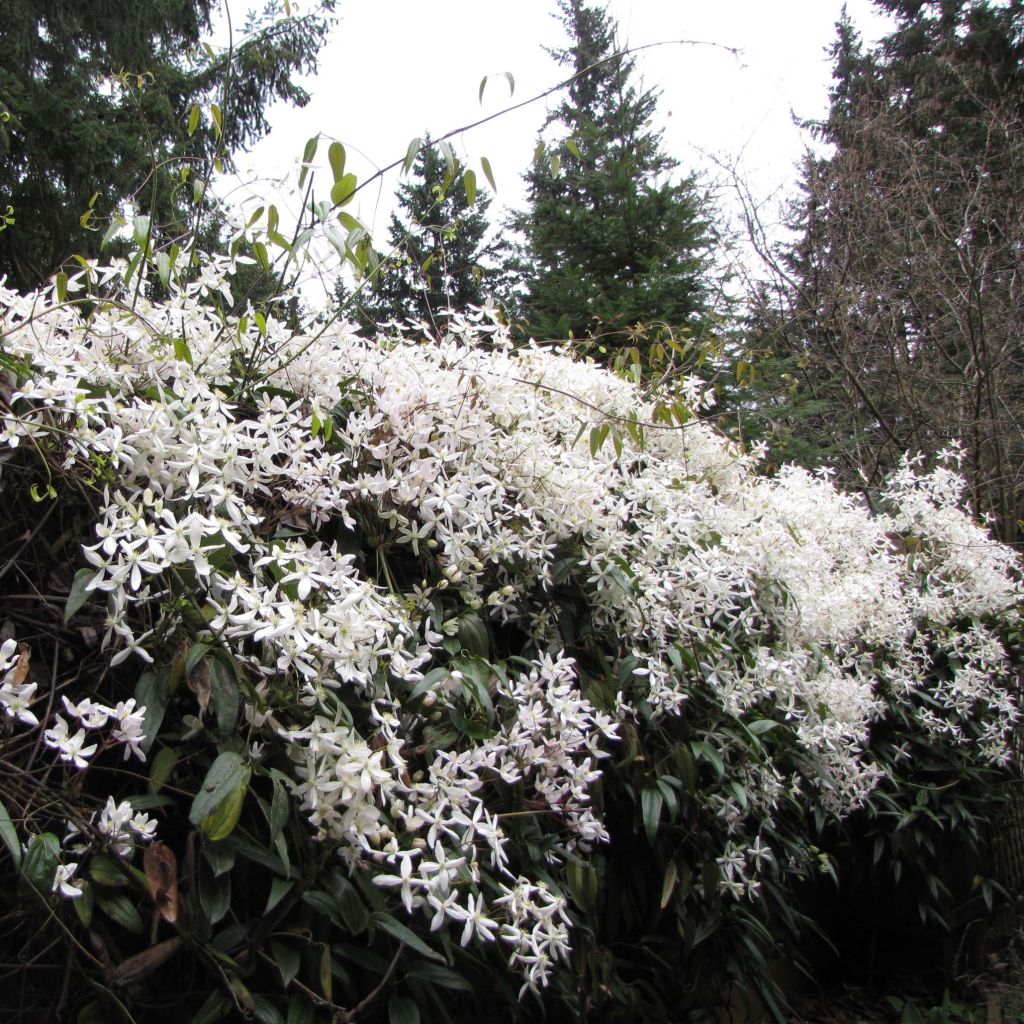

Clematis armandii Snowdrift - Evergreen Clematis
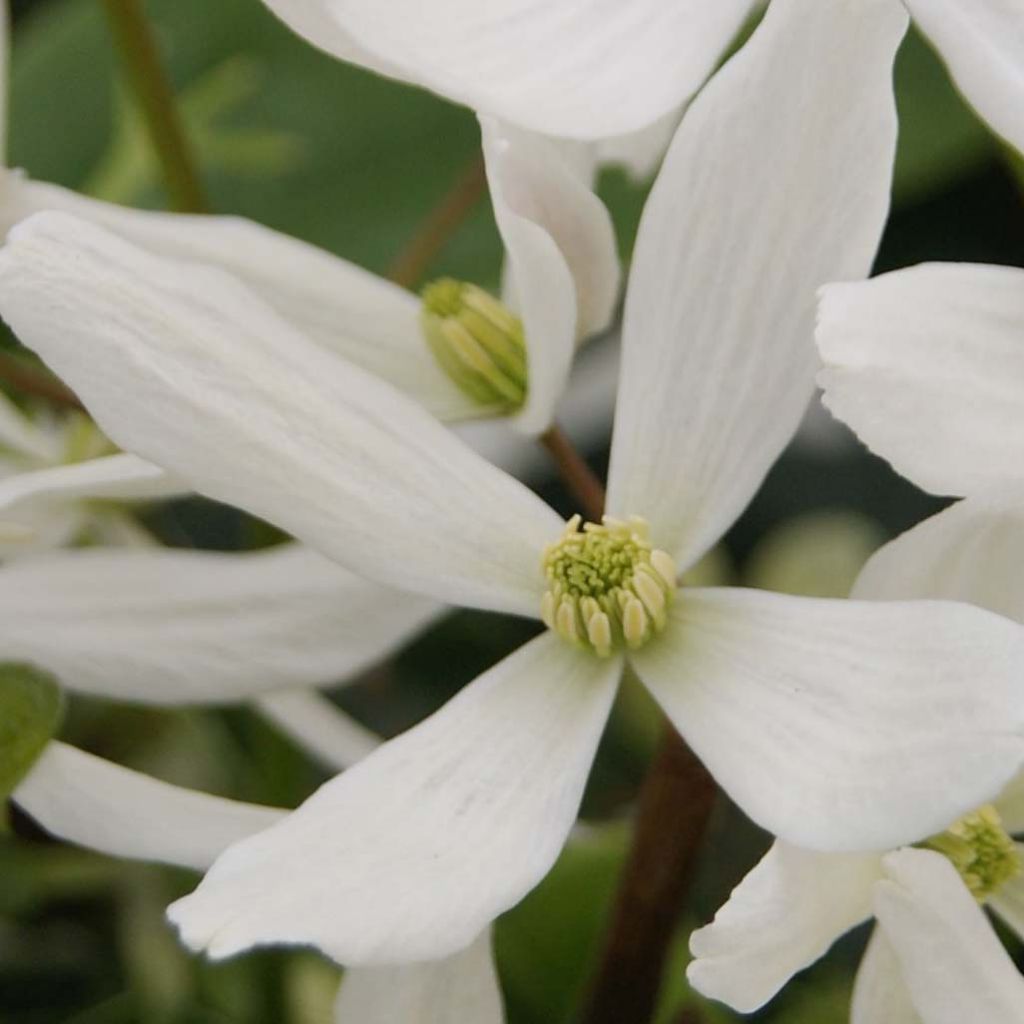

Clematis armandii Snowdrift - Evergreen Clematis
Clematis armandii Snowdrift - Evergreen Clematis
Clematis armandii Snowdrift
Armand Clematis, Evergreen Clematis
My plant started well, but then the leaves began to dry out and some branches were already damaged upon reception. It was in a semi-shady location. I just cut everything back, but I doubt it will grow back. What a pity!
m-france, 10/08/2024
Special offer!
Receive a €20 voucher for any order over €90 (excluding delivery costs, credit notes, and plastic-free options)!
1- Add your favorite plants to your cart.
2- Once you have reached €90, confirm your order (you can even choose the delivery date!).
3- As soon as your order is shipped, you will receive an email containing your voucher code, valid for 3 months (90 days).
Your voucher is unique and can only be used once, for any order with a minimum value of €20, excluding delivery costs.
Can be combined with other current offers, non-divisible and non-refundable.
Home or relay delivery (depending on size and destination)
Schedule delivery date,
and select date in basket
This plant carries a 6 months recovery warranty
More information
We guarantee the quality of our plants for a full growing cycle, and will replace at our expense any plant that fails to recover under normal climatic and planting conditions.
Would this plant suit my garden?
Set up your Plantfit profile →
Description
The Clematis armandii Snowdrift is a form with pure white flowers and particularly floriferous of the Clematis Armandii. This vigorous liana is one of the few evergreen clematis, which are also more frost-sensitive than deciduous species. Its early flowering, with divinely scented white cascades, begins as early as the end of winter in the south of our country, accompanying that of almond trees to announce the return of spring. Since it does not cling on its own, it is necessary to train it on a support like a large trellis when it is planted at the base of a wall. This clematis is splendid when planted in a hedge of bushes on which it will take support and which, at the same time, will hide the dead and brown leaves that remain attached to the branches for a long time.
The armandii clematis is a persistent, robust and floriferous Chinese botanical species, capable of quickly covering large areas. The 'Snowdrift' cultivar stands out for its slightly less significant development, its more coppery young foliage, its fuller foliage, its slightly later and even more abundant flowering, and its slightly larger flowers with finer petals. These plants belong to the renunculaceae family.
'Snowdrift' sends out quadrangular woody climbing stems from its stump, measuring 3 to 4m (10 to 13ft) long. Over time, this liana will spread over an area of more than 3m (10ft) on the ground. Vegetation restarts in February, with the appearance of large reddish flower buds. They quickly swell and elongate to bloom into large clusters of buds. Each one gives birth to a 7.5cm (3in) diameter flower, composed of 4 thin and pure white petals surrounding a heart of creamy and green stamens. Their pronounced scent is reminiscent of orange blossom and almond. After flowering, it is the coppery young shoots that develop on the branches. They unfold into leaves divided into 3 large, deeply veined, shiny, dark green leaflets. These leaves are so firmly attached to the stems that they have difficulty detaching themselves when they dry. Large brownish-black areas then form, more or less concealed under the young foliage. It may be useful to remove these dead leaves for aesthetic reasons only.
The Snowdrift clematis is a less hardy variety that does not tolerate cold winters well, especially in heavy soil and windy exposure. Plant it to cover a well-exposed, very sunny wall, where it can withstand short freezes of around -12/-15°C (10.4/5°F) once established. On the other hand, it is a star of gardens in the south, just like the banksia roses with which it associates well; it perfectly resists dry and hot summers after 2 to 3 years of careful cultivation and care, provided it is well established in a deep, well-prepared, amended and loosened soil. It is better to avoid launching it to assault a pergola for two reasons; its evergreen foliage blocks the sun in winter and its dry foliage, which accumulates under the vegetation, is not very aesthetic. But the beauty of this liana and the scent of its flowers are well worth a few minutes of meticulous pruning, once a year.
Clematis armandii Snowdrift - Evergreen Clematis in pictures
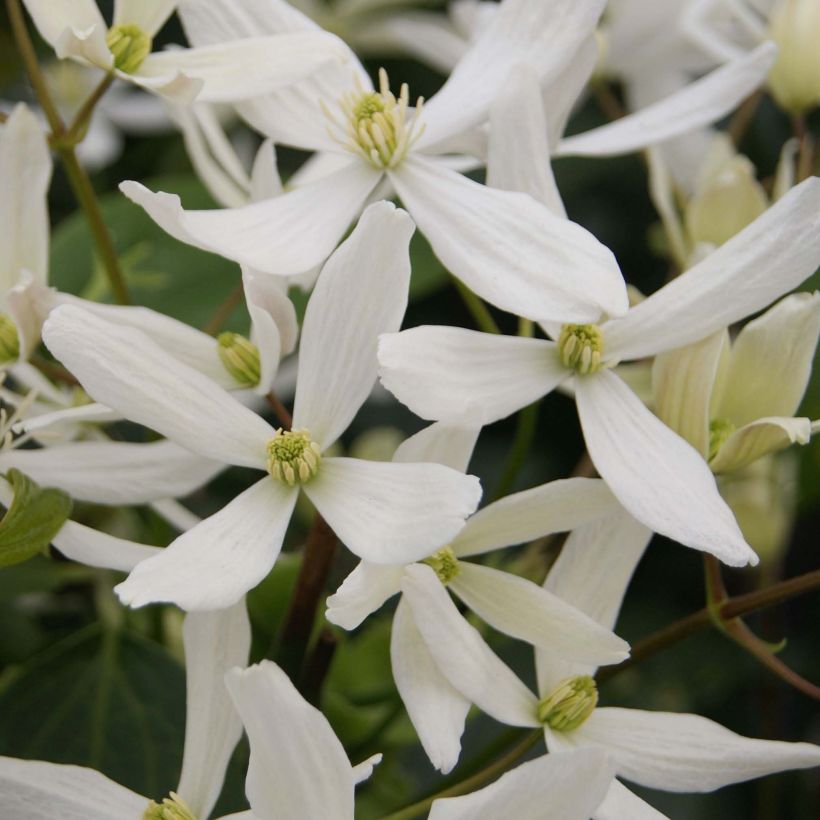

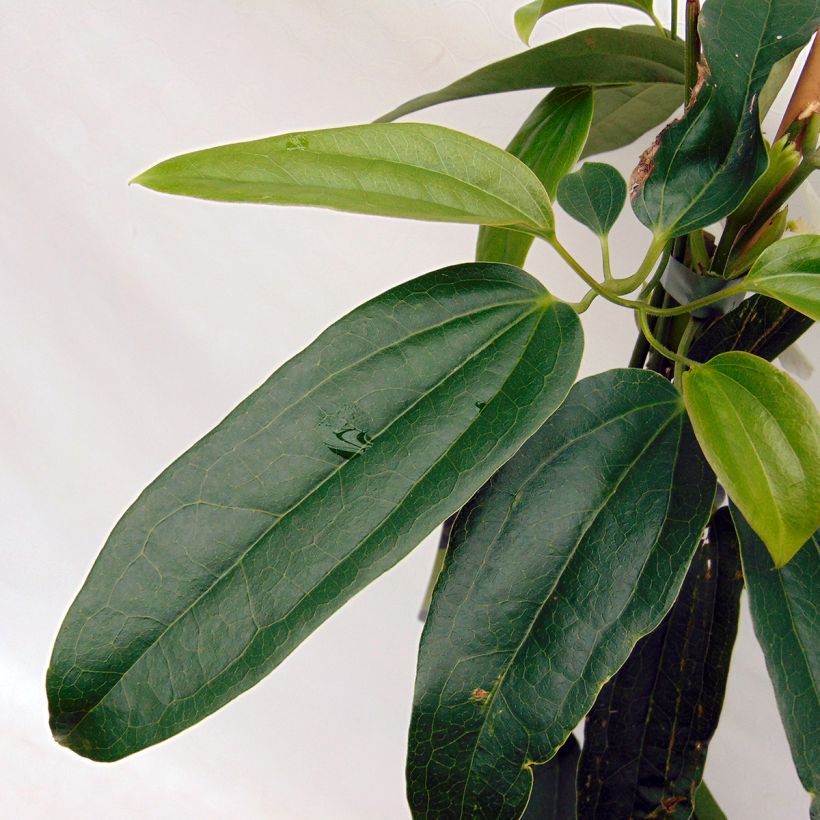

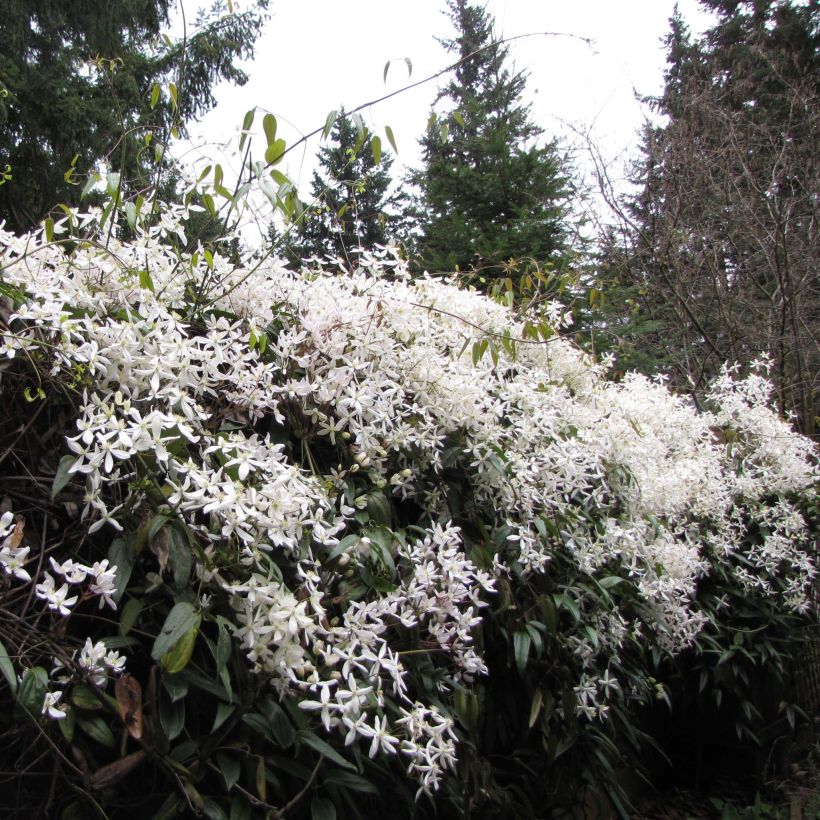

Plant habit
Flowering
Foliage
Botanical data
Clematis
armandii
Snowdrift
Ranunculaceae
Armand Clematis, Evergreen Clematis
Cultivar or hybrid
Other Clematis A to Z
View all →Planting and care
In sunny exposure, shade the base of your Snowdrift clematis with a ground cover plant or a perennial geranium. Clematises like to have their feet cool and their heads in the sun. This one is quite sensitive to cold, but can withstand short frosts of around -12 to -15°C (10.4 to 5°F) in healthy soil and in a sheltered position protected from dry and cold winds. It tolerates being planted in the dense shade of a tree or a large bush that it will climb to bloom in the sun. Armand clematis prefers deep and loose soils, and tolerates the presence of limestone. Take care when planting: install your plant by covering the root ball with 3 cm (1in) of soil, in soil worked to a depth of 20-30 cm (8-12in), lightened with good compost. In the first few weeks, water abundantly and regularly. Monitor watering during the first 2 or 3 summers, in hot and dry weather; water generously, but at long intervals (once a week or once every 2 weeks depending on the weather conditions). Clematises cling by themselves thanks to their petioles transformed into tendrils. To guide their growth, offer them a trellis support or let them dress the trunk of a tree by placing a wire mesh. Clematises also like to grow freely on neighboring plants. In the north and east of France, success is somewhat random; it must be planted in a very sunny location and well protected from cold winter winds. Mulch the soil and a 2m (7ft) tall liana will help it withstand, very occasionally, temperatures below -12°C (10.4°F).
Planting period
Intended location
Care
Planting & care advice
-
, onOrder confirmed
Reply from on Promesse de fleurs
Similar products
Haven't found what you were looking for?
Hardiness is the lowest winter temperature a plant can endure without suffering serious damage or even dying. However, hardiness is affected by location (a sheltered area, such as a patio), protection (winter cover) and soil type (hardiness is improved by well-drained soil).

Photo Sharing Terms & Conditions
In order to encourage gardeners to interact and share their experiences, Promesse de fleurs offers various media enabling content to be uploaded onto its Site - in particular via the ‘Photo sharing’ module.
The User agrees to refrain from:
- Posting any content that is illegal, prejudicial, insulting, racist, inciteful to hatred, revisionist, contrary to public decency, that infringes on privacy or on the privacy rights of third parties, in particular the publicity rights of persons and goods, intellectual property rights, or the right to privacy.
- Submitting content on behalf of a third party;
- Impersonate the identity of a third party and/or publish any personal information about a third party;
In general, the User undertakes to refrain from any unethical behaviour.
All Content (in particular text, comments, files, images, photos, videos, creative works, etc.), which may be subject to property or intellectual property rights, image or other private rights, shall remain the property of the User, subject to the limited rights granted by the terms of the licence granted by Promesse de fleurs as stated below. Users are at liberty to publish or not to publish such Content on the Site, notably via the ‘Photo Sharing’ facility, and accept that this Content shall be made public and freely accessible, notably on the Internet.
Users further acknowledge, undertake to have ,and guarantee that they hold all necessary rights and permissions to publish such material on the Site, in particular with regard to the legislation in force pertaining to any privacy, property, intellectual property, image, or contractual rights, or rights of any other nature. By publishing such Content on the Site, Users acknowledge accepting full liability as publishers of the Content within the meaning of the law, and grant Promesse de fleurs, free of charge, an inclusive, worldwide licence for the said Content for the entire duration of its publication, including all reproduction, representation, up/downloading, displaying, performing, transmission, and storage rights.
Users also grant permission for their name to be linked to the Content and accept that this link may not always be made available.
By engaging in posting material, Users consent to their Content becoming automatically accessible on the Internet, in particular on other sites and/or blogs and/or web pages of the Promesse de fleurs site, including in particular social pages and the Promesse de fleurs catalogue.
Users may secure the removal of entrusted content free of charge by issuing a simple request via our contact form.
The flowering period indicated on our website applies to countries and regions located in USDA zone 8 (France, the United Kingdom, Ireland, the Netherlands, etc.)
It will vary according to where you live:
- In zones 9 to 10 (Italy, Spain, Greece, etc.), flowering will occur about 2 to 4 weeks earlier.
- In zones 6 to 7 (Germany, Poland, Slovenia, and lower mountainous regions), flowering will be delayed by 2 to 3 weeks.
- In zone 5 (Central Europe, Scandinavia), blooming will be delayed by 3 to 5 weeks.
In temperate climates, pruning of spring-flowering shrubs (forsythia, spireas, etc.) should be done just after flowering.
Pruning of summer-flowering shrubs (Indian Lilac, Perovskia, etc.) can be done in winter or spring.
In cold regions as well as with frost-sensitive plants, avoid pruning too early when severe frosts may still occur.
The planting period indicated on our website applies to countries and regions located in USDA zone 8 (France, United Kingdom, Ireland, Netherlands).
It will vary according to where you live:
- In Mediterranean zones (Marseille, Madrid, Milan, etc.), autumn and winter are the best planting periods.
- In continental zones (Strasbourg, Munich, Vienna, etc.), delay planting by 2 to 3 weeks in spring and bring it forward by 2 to 4 weeks in autumn.
- In mountainous regions (the Alps, Pyrenees, Carpathians, etc.), it is best to plant in late spring (May-June) or late summer (August-September).
The harvesting period indicated on our website applies to countries and regions in USDA zone 8 (France, England, Ireland, the Netherlands).
In colder areas (Scandinavia, Poland, Austria...) fruit and vegetable harvests are likely to be delayed by 3-4 weeks.
In warmer areas (Italy, Spain, Greece, etc.), harvesting will probably take place earlier, depending on weather conditions.
The sowing periods indicated on our website apply to countries and regions within USDA Zone 8 (France, UK, Ireland, Netherlands).
In colder areas (Scandinavia, Poland, Austria...), delay any outdoor sowing by 3-4 weeks, or sow under glass.
In warmer climes (Italy, Spain, Greece, etc.), bring outdoor sowing forward by a few weeks.































